Janelle Fine’s photography is visceral, delicate, and striking, and we’re so pleased to have them as our featured artist for 40.4. We were immediately struck by the strange violence and intimacy of these images. Art Editor Cade Leebron got in touch with Janelle to ask them a few questions about their series, “Eggs: Volume 1.”
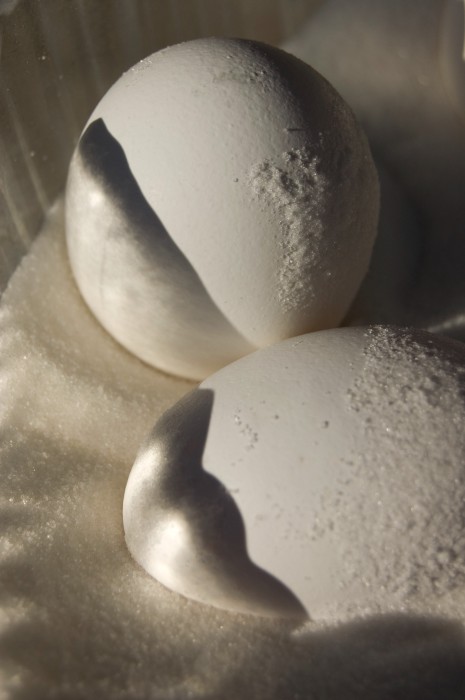
Cade Leebron: What first drew you to eggs as a subject?
Janelle Fine: As a photographer, I have always been more interested in creating things than documenting what already exists. I’ve always loved the control of being able to curate and set up the subject matter, while also being able to insert myself into the subject. I wanted to pick a simple object that I could spend time studying. The egg is such an underrated object but it’s great for manipulating. From an aesthetic and design point of view, it’s beautiful and has a pleasing, versatile shape. Its simplicity lends itself well to playing with light and shadow, which I love to do.
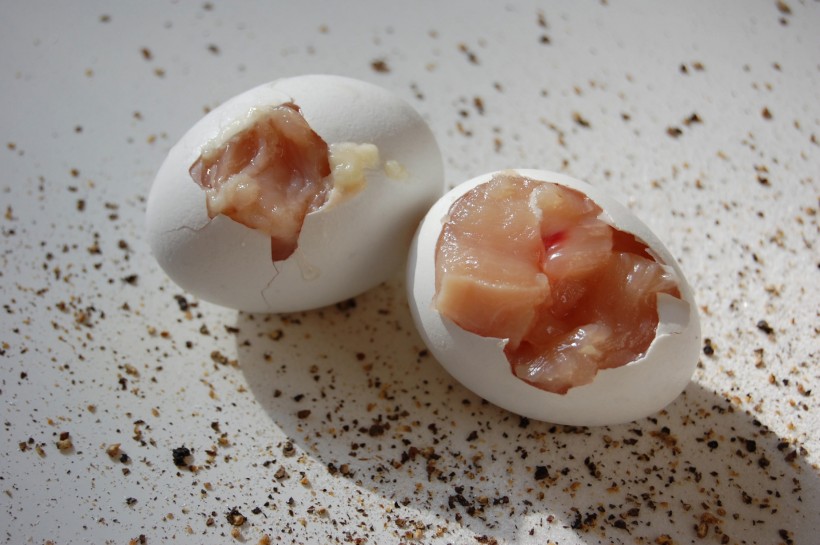
CL: We noticed that your series is titled “Eggs: Volume 1” – are these photos part of a larger body of work? If so, how do they fit into that body of work?
JF: I took a ton of photos to get to these few that I feel are really strong, but I don’t think I have finished exploring this subject and would love for this series to continue on. I’m hoping that giving myself some distance and time between will allow me to look at the egg with fresh eyes. I think I’ll know when the project is over when I find I’ve repeated myself.
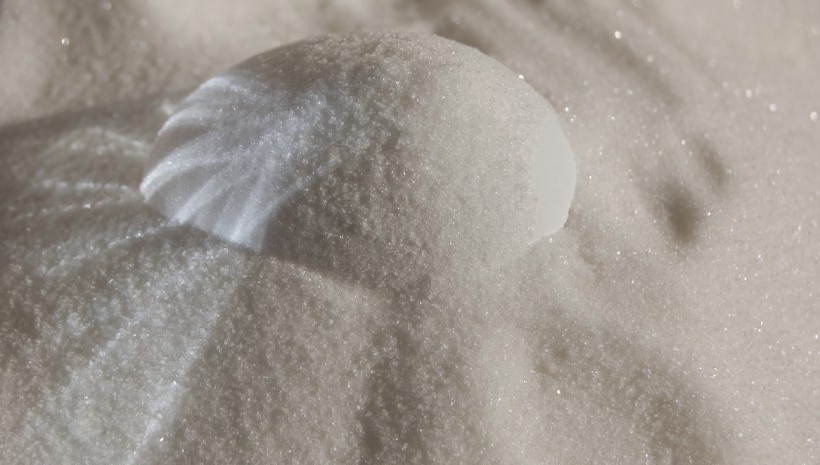
CL: What was the process of creating these shots like physically? Was it difficult to work with these materials?
JF: There are some challenges and trial and error in working with a delicate object. For example, when you go to crack the egg or remove a piece of shell, sometimes the whole egg breaks or the egg yolk mixes with the egg white. The shape and texture of eggs also present some challenges in terms of shadows and lighting – but that’s what also what makes them so interesting to work with. I did a lot of experiments that didn’t turn out or looked too much like Easter eggs. I wanted to play around with enhancing the egg without being gimmicky.
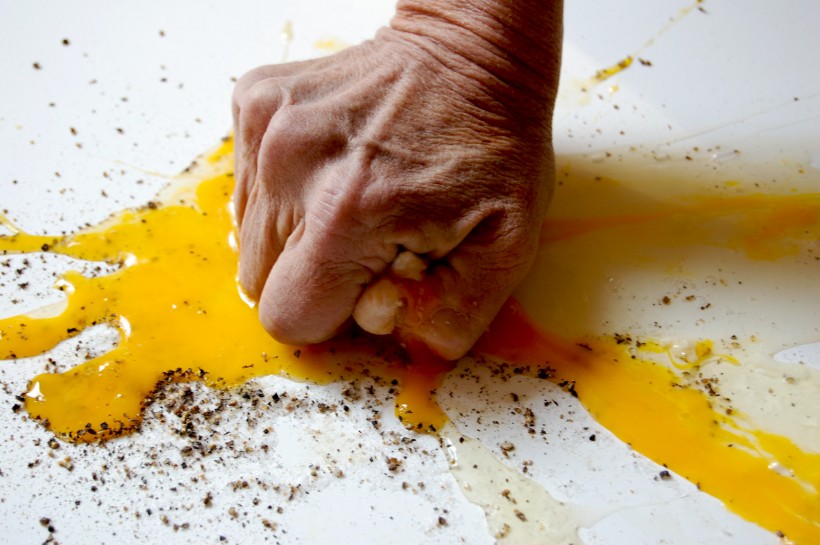
CL: You mentioned to us in your artist statement that “the simplest of objects should be inspected and re examined.” Are you planning to do any other photo series of simple objects, and if so, how does “Eggs” relate to those other series?
JF: I am currently working a project of photographing circles predominantly in architecture. It’s a little bit different than the eggs in that I am photographing them in their untouched environment and my only real involvement is my framing and camera placement; whereas in these egg photographs, I’m staging and manipulating them with other elements such as glue or sugar. But, I do think it’s a similar process for me as a photographer because I like to make people pause at the little things.
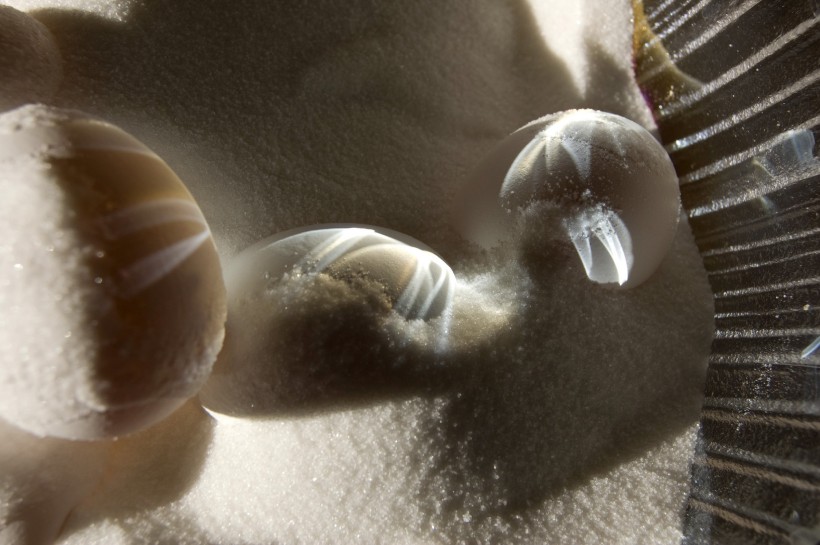
CL: Some of the photos have an extreme delicacy to them (the choice of eggs as a subject, the ephemeral nature of sugar sticking to eggs via humidity, the monochromatic scale) and some display evidence of violence (the eggshells cracked with meat inside, the hand squishing what looks like a fertilized egg, the bright colors in these images) – could you talk to us a bit about that contrast?
JF: To me, the contrast is between something more vibrant and something more subtle. There is a very delicate quality to an egg and I wanted to portray that, but there’s also this visceral quality to egg yolk that I’m in love with – when you crack an egg or squish it. I do think there is a kind of beautiful violence in the act of crushing an egg–watching it shatter, watching the yoke run out.
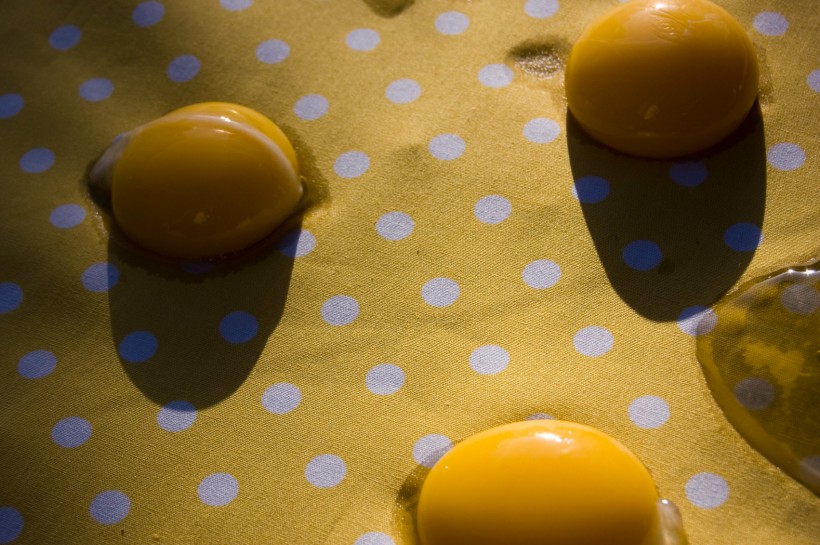
CL: You’re also a poet (hooray!). Do you find yourself exploring similar themes in your poetry as you’re exploring here in your visual art? In what ways are your visual art and writing similar and different?
JF: My current writing project is a series of letters to my body. I’ve never really compared my art to my writing before but if there is any similarity, it’s in my desire to study something in detail. I don’t think I’ve ever really compared my art and writing because I usually use one as an escape from the other. When I’m struggling with my writing it helps to be able to put my brain somewhere else and visa versa. I like to work going back and forth from one to the other. Because my writing is so personal it’s nice to refocus, and my photography has been a great escape for that.
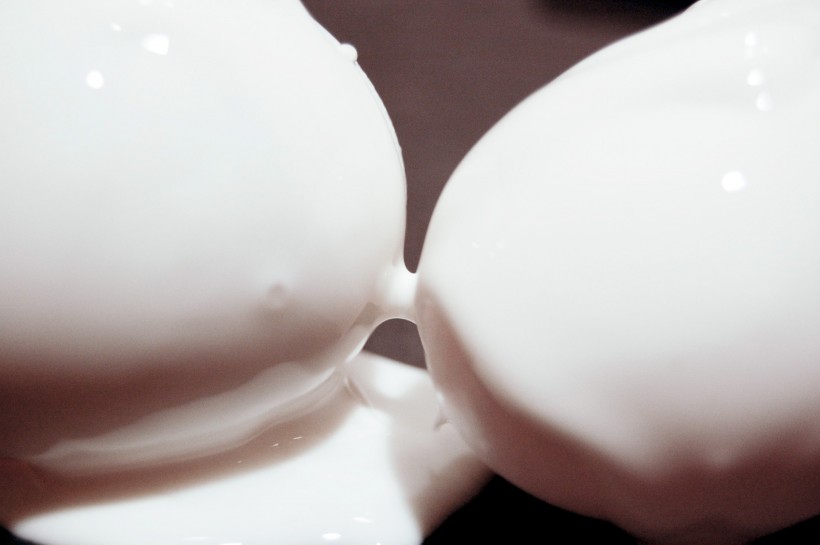
Questions prepared by Cade Leebron & Liz Blackford, Assistant Art Editor.
